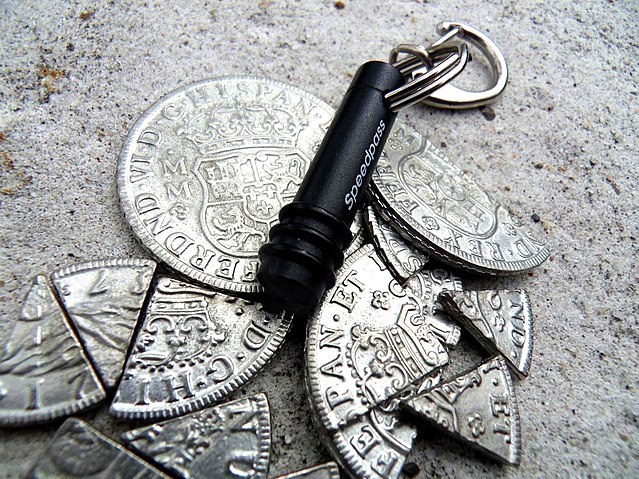From the Archives: Word with a Past–Two Bits
In every book I write I reach the point where I am so deep in the work that I have to stop writing blog posts and newsletters. I always hope to avoid it. That somehow I’ll be smarter, or faster, or more organized, or just more. This time I’ve managed to avoid hitting the wall for several months by cutting back to one post a month. But the time has come. For the next little while, I’m going to share blog posts from the past. (This one is from 2013. Time flies.) I hope you enjoy an old favorite, or read a post that you missed when it first came out.
There will be new posts in March no matter what: we celebrate Women’s History Month hard here on the Margins. (I have some fascinating people lined up.)
One of the favorite cheers for my junior high school’s football team went “Two bits, four bits, six bits, a dollar, all for our team stand up and holler.” It made no sense to me, but neither did football. When the rest of the Trojan fans stood up and hollered, I stood up and hollered. When they said glumly in the stands, I sat. By high school, my best friends were all in marching band, I was therefore freed of my weekend football obligation, and I knew that “two bits” meant a quarter–I just didn’t know why.
Turns out the phrase has its roots in the Spanish conquest of the Americas and the river of silver that flowed from the mines of Potosí to the royal coffers in Madrid. (1)
In 1497, their Most Catholic Majesties Ferdinand and Isabella introduced a new coin into the global economy as part of a general currency reform. The peso (literally “weight”) was a heavy silver coin that was worth eight reales.(2) In Spanish it became known as a peso de ocho(3); in English it was a “piece of eight”.
The peso quickly became a global currency. It was relatively pure silver, it was uniform in size and weight, and it had one special characteristic: it could be divided like a pie into eight reales. In English, those reales became known as “bits”. Two bits were a quarter of a peso. After the new American Congress based the weight of the American dollar on the peso in 1792(4), “two bits” also referred to a quarter of a dollar.
Now I need to figure out what “Two in ten, let’s do it again” means.
(1)And flowed right back out again to pay for spices, textiles and other luxury goods in the India trade.
(2) The important word here is EIGHT, not reales. The story would be the same if it were eight goats, eight marbles, or eight football fans.
(3) For those of you who never had to count to ten in Spanish, ocho means EIGHT.
(4) Choosing to base American currency on the peso rather than the pound was a not-so-subtle way to spit in Great Britain’s eye. The peso remained legal tender in the US until the 1850s.





